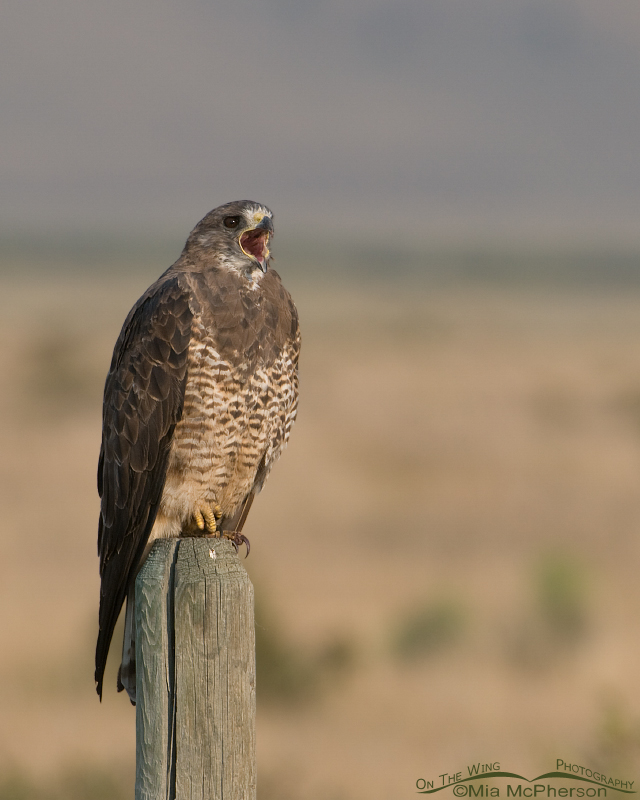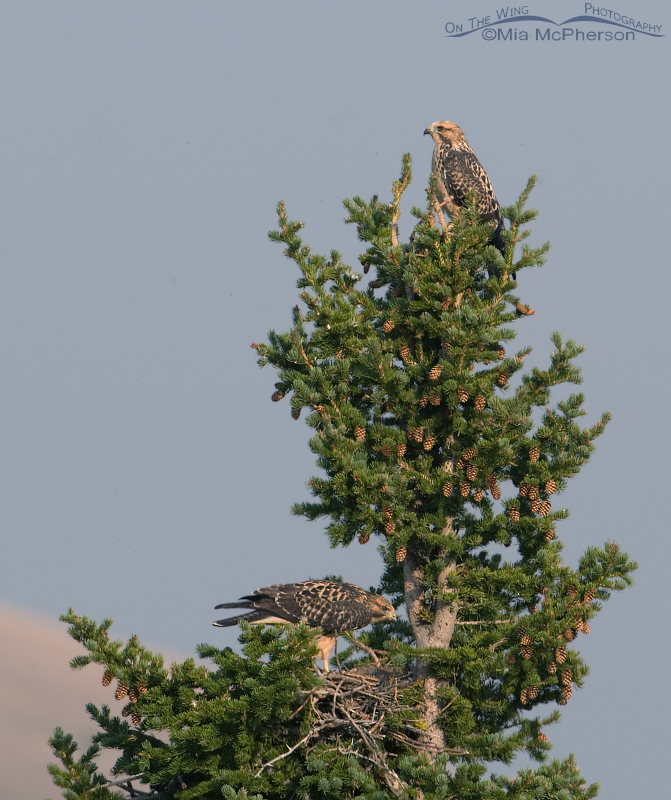 Adult Swainson’s Hawk calling near its young – Nikon D300, f9, 1/250, ISO 320, +0.7 EV, Nikkor 200-400mm VR with 1.4x TC at 400mm, natural light, not baited
Adult Swainson’s Hawk calling near its young – Nikon D300, f9, 1/250, ISO 320, +0.7 EV, Nikkor 200-400mm VR with 1.4x TC at 400mm, natural light, not baited
The dreary weather we have had lately in the Salt Lake Valley of Utah and the lack of birds has set my mind wandering back to warmer days and plentiful birds and has also made me wonder what I will see this upcoming summer.
Summer in Beaverhead County, Montana always seems to bring surprises and that is where I really appreciate my keen “hawk eye” vision and my awareness of my surroundings. Two years ago on the third trip to Montana while photographing this adult Swainson’s Hawk I noticed some movement out of my peripheral vision and because of that I was able to photograph an American Badger at eye level up close and personal.
 Juvenile Swainson’s Hawks and their nest – Nikon D300, f6.3, 1/800, ISO 400, Nikkor 200-400mm VR with 1.4x TC at 314mm, natural light, not baited
Juvenile Swainson’s Hawks and their nest – Nikon D300, f6.3, 1/800, ISO 400, Nikkor 200-400mm VR with 1.4x TC at 314mm, natural light, not baited
I’d also seen that adult Swainson’s Hawk in the same area before and it always seemed to be calling so I took my eyes off of the adult bird and scanned the area carefully and was pleased when I spotted these two juvenile Swainson’s on and near the nest. I had also seen the two juvenile hawks in the area prior to this but hadn’t noticed the nest in the tree.
I can barely wait until spring when the Swainson’s Hawks will migrate back from South America to fill the skies here with their beauty.
Life is good.
Mia
Click here to see more of my Swainson’s Hawk photos plus facts and information about this species.
PS: Last year some Common Ravens used this nest to rear their young and soon after they fledged someone removed the nest. That was really unethical to remove the nest, especially on public lands.


Superb photos!
How gorgeous. What a magical find. Removing the nest? Sometimes (often) I despair of humanity.
You’re so right!
Gorgeous shots Mia! I have never seen a young Swainson’s Hawk. They certainly are beautiful with those tawny heads and mottled backs. Swainson’s Hawks build fairly frail nests by raptor standards so hopefully this nest was not removed intentionally. One of the causes of the decline of this species is lack of nesting sites and foraging habitat. Unfortunately, the other cause is spraying of pesticides on their wintering grounds in Argentina.
I wonder why anyone would want to remove a nest like that one? Makes no sense. It’s obviously well-used. Love both shots,! First one made me yawn…great composition in second!
Amazing..the photos are fabulous..
Super! is my word for these pictures and story..